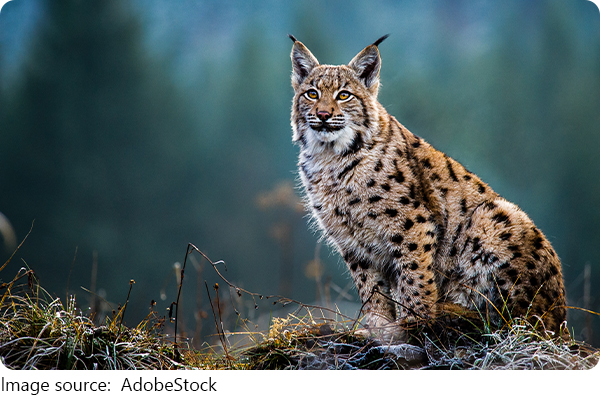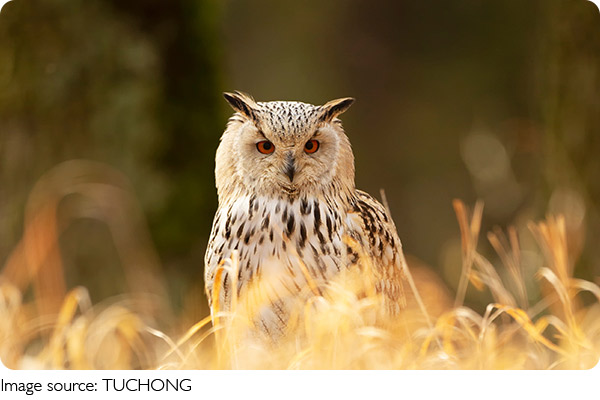Night Vision Secrets

Have you ever wondered how animals like owls, bats, and cats can navigate perfectly in the dark when humans struggle to see?
Nocturnal creatures have evolved amazing visual systems that allow them to hunt, avoid predators, and move confidently at night.
Let's uncover the secrets behind their extraordinary night vision and understand how their eyes work in near-total darkness.
The Role of Large Eyes and Pupils
One of the most noticeable features of nocturnal animals is their relatively large eyes compared to body size. Larger eyes allow more light to enter, which is crucial in low-light environments. In addition, their pupils can open wider than those of daytime animals, maximizing light intake. This combination helps gather every possible photon in the darkness to create clearer images.
Tapetum Lucidum: The Reflective Eye Layer
Many nocturnal animals possess a special layer behind their retinas called the tapetum lucidum. This layer acts like a mirror, reflecting light that passes through the retina back into the eye, giving the photoreceptor cells a second chance to capture it. This increases the eye's sensitivity and often causes the famous "eye shine" seen when light hits animal eyes at night.
High Rod Density for Light Sensitivity
The retina contains two main types of photoreceptors: rods and cones. Rod cells are extremely sensitive to light but do not detect color, while cones detect color but need brighter light. Nocturnal animals have retinas dominated by rods, allowing them to see in very dim conditions, though mostly in shades of gray. This adaptation prioritizes light sensitivity over color vision to improve night sight.
Enhanced Neural Processing
Beyond the eye itself, nocturnal animals have brain adaptations to process visual information efficiently. Their visual cortex and optic nerves are fine-tuned to detect movement and shapes in low light. This neural enhancement helps them quickly respond to prey or threats, even with limited visual cues.
Other Sensory Support for Night Navigation
While vision is vital, many nocturnal animals combine it with other senses. Bats use echolocation to "see" with sound, and some nocturnal mammals rely heavily on smell or touch. These additional senses complement their eyesight and create a fuller understanding of their environment during darkness.
Examples of Night Vision Specialists
Owls are famous for their incredible night vision, thanks to large forward-facing eyes, a high rod count, and a pronounced tapetum lucidum. Cats, another classic example, use large pupils and reflective eyes to excel in hunting at dawn, dusk, and night. Even deep-sea fish that live in near-complete darkness have evolved huge eyes and special proteins to capture the faintest bioluminescent light.

Scientific Insights into Night Vision
Studies on animal eyes using advanced imaging and genetic analysis have revealed the molecular basis of night vision adaptations. Researchers have identified genes responsible for rod cell development and proteins that enhance light absorption. This research not only explains animal vision but also inspires innovations in low-light imaging technology for humans.
Why Understanding Night Vision Matters
Learning how nocturnal animals see can improve our own technologies, from better night cameras to safer driving at night. It also helps in conservation by understanding the habitats and behaviors that support these animals' survival. Protecting dark environments is essential as artificial lighting increases worldwide.
Conclusion: A World Beyond Human Sight
Nocturnal animals reveal a hidden world visible only through their unique eyes. Next time you see glowing eyes in the dark, remember the incredible science behind their vision. Which adaptation do you find most fascinating? Share your thoughts and stay curious about the natural world's wonders!
-
 Lightweight Lip Favorites!Lightweight Lip Favorites Worth Loving?! Which Ones Stay Soft Without Stick Or Smudge?
Lightweight Lip Favorites!Lightweight Lip Favorites Worth Loving?! Which Ones Stay Soft Without Stick Or Smudge? -
 Business Cash BalanceKeep Your Business Alive: How to Manage Money Like a Pro!
Business Cash BalanceKeep Your Business Alive: How to Manage Money Like a Pro! -
 Ethiopia: Wild & WiseCliff-edge treks, calm lakes, roaring falls—this Ethiopia guide blends costs, visas, and seasons for a smart, scenic adventure.
Ethiopia: Wild & WiseCliff-edge treks, calm lakes, roaring falls—this Ethiopia guide blends costs, visas, and seasons for a smart, scenic adventure.